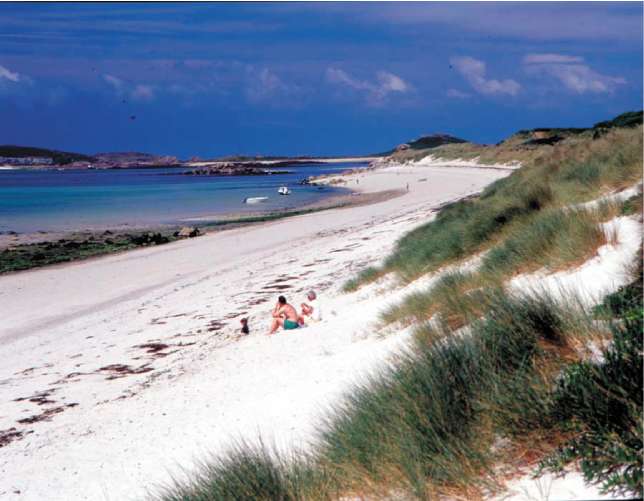Simon Calder: The man who pays his way

Domestic bliss: the UK travel industry hopes that is what you will light upon this summer. The higher the price of oil, the lower the value of sterling and the sunnier the May skies, the more tempting it is to holiday at home. How, though, are you going to travel: plane, train or automobile? Road or rail are the obvious choices; with growing concern about the impact of flying on the planet, and the price of aviation fuel soon to overtake that of malt whisky, surely most domestic flights are scheduled for extinction.
Well, that was what I thought. Then I looked at the airlines' plans for this summer's schedules: 15 new flights within Britain, including such unlikely pairings as Inverness to Exeter and Doncaster to Jersey. Improbable as they may sound, these new links will save passengers many hours of travelling terrestrially. And judging by the success of the domestic link that celebrated its first birthday yesterday, the intra-UK flight industry is flourishing.
A year and a day ago, Wales got its first and only domestic flight. If you want to take off from Cardiff and fly somewhere else in the principality, you have no choice about your airline – Highland Airways – nor your destination: Anglesey.
The spectacular terrain in Wales does not make for easy overland travel. Anyone hoping to go by train from the Welsh capital to a far-flung fragment of North Wales can expect a long and very winding journey.
In almost any country with a rail network, you can travel from the capital to the provinces without leaving the national boundaries. One rare exception in Austria, where the fastest train between Vienna and Innsbruck traverses German territory (the so-called Korridorzug).
Rail passengers between Cardiff and North Wales, though, find themselves crossing the border between Wales and England no fewer than four times. The line from the south coast of Wales to the north shore provides superb scenery unwinding past the window. But two sweeps of landscape are English, not Welsh. The five-hour journey to Anglesey parallels Offa's Dyke for much of its course, but sometimes on the "wrong" side of the historic frontier.
Travellers on the Trans-Cambrian Express (as I shall call it) enjoy stops in Hereford, Ludlow and Shrewsbury before crossing back into Wales to visit Chirk, Ruabon and Wrexham. Then the train leaves the principality once more for a short visit to Chester.
Book ahead and you can get this geo-political mystery tour for just £15 – the lowest advance one-way fare from Cardiff all the way to Holyhead, on Holy Island, just beyond the north-west edge of Anglesey. Yet if you prefer to make the hop from the capital to Anglesey in an hour or less, then the plane will cost only a fiver more.
Highland Airways was born in Scotland but now flies over Snowdonia for only £19.99 each way if you book well ahead. The exact trajectory depends on the activities of the RAF, which uses rural Wales for training, but the views are almost guaranteed to be superb. And despite concerns about the per-passenger damage caused by small civil aircraft, the Cardiff-Anglesey link has proved immensely popular. Flights were projected to be, on average, half full; but in the first year, four out of every five seats were filled.
Thanks to the link and another connection to south-west England, Cardiff is now the hub for a British island-hopping adventure. The Isles of Scilly were once tricky to reach; you had to start in Penzance and take a three-hour boat trip or a helicopter flight, both of which could be bumpy.
Now, though, the last resort for domestic holidaymakers in England has good connections to a wide range of destinations. This is largely thanks to Newquay, which is rapidly becoming the Amsterdam Schiphol or Chicago O'Hare of Cornwall.
Skybus will fly you from St Mary's in Scilly, via Newquay, to Cardiff. The dedicated island-hopper en route to Anglesey will have nearly five hours to wait at Cardiff airport – allowing a short hop to Barry Island, 10 minutes from the airport.
I visited Barry Island for the first time last week, and found a chunk of cheerfulness with a fine beach and amenities on the scale of Las Vegas, at least in name: Barry Island boasts its very own Caesar's Palace. Should you decide to explore more of the Welsh coastline from here, connecting to the Cambrian Coast railway (featured in Something to Declare, page 11), it will take six-and-a-half hours by train. Via England, naturally.
Wave hello to Scotland
Transforming timescales is also going on in Scotland, thanks to a mode of transport previously restricted to the Maldives and British Columbia. Loch Lomond Seaplanes has launched scheduled services from the River Clyde in Glasgow to the pretty West Coast port of Oban (£79 one way) and to Tobermory on the island of Mull (£99 one way).
The precision of the timetable is impressive: "After approximately 31 minutes in the air, the plane descends into the bay of the bustling harbour of Tobermory." Passengers save about five hours compared with the road or rail trip to Oban and the Caledonian MacBrayne ferry, and they gain a prospect of the most beautiful country in the world from an unfamiliar, yet compelling, viewpoint.
www.lochlomondseaplanes.com , 0870 242 1457; www.highlandairways.co.uk, 0870 777 0915; www.skybus.co.uk, 01736 334 224
Subscribe to Independent Premium to bookmark this article
Want to bookmark your favourite articles and stories to read or reference later? Start your Independent Premium subscription today.

Join our commenting forum
Join thought-provoking conversations, follow other Independent readers and see their replies